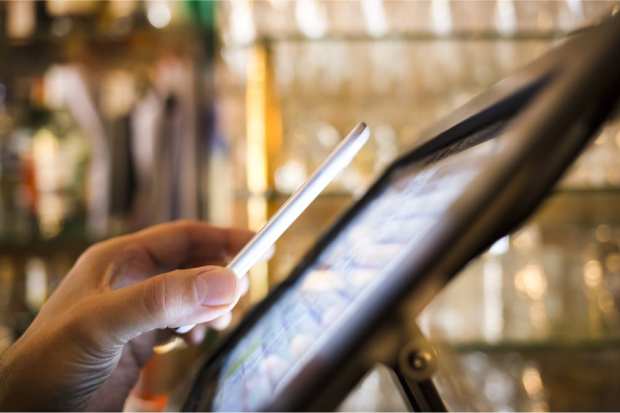Less Contact Is More In Order-To-Eat Space

Fear is a motivator, and if there’s one thing people are afraid to touch in a post-pandemic world, it’s whatever other people have touched. Like point-of-sale (POS) keypads. That’s how human nature is now accelerating true contactless payments that the industry has longed promised.
In the white-hot food delivery sector, companies are jumping on contactless payments as part of their reinvention. Still others are marrying up payments tech with loyalty programs in unified platform environments that make the most of the data from both to create better experiences.
PYMNTS’ May 2020 Order To Eat Tracker® done in collaboration with Paytronix provides rich details on a variety of market moves for food ordering in the quick service restaurant (QSR) sector especially, where much innovation is required for reinvention and reopening.
“People are already wary of touching anything in a store, especially a payment terminal that countless people have handled before them, Paytronix Co-Founder and President Andrew Robbins told PYMNTS. “[Near-field communication]-based tap-to-pay is becoming a must-have for any retail brand, and people will pay in advance if they can. Add to this curbside pickup or touchless delivery and you can see the trends emerging.”
Loyalty and Ingenuity
With same-store sales in QSRs down an estimated 55 percent in April compared to 2019, emerging trends in the Order-To-Eat (OTE) space revolve around digital delight, and what that can do for stressed-out customers and overwhelmed business owners.
The May 2020 Order To Eat Tracker® profiles OTE strategies of several savvy operators, from San Francisco-based Indian street food chain Curry Up Now to Zukku Sushi, the latter using the Paytronix order-and-delivery system as part of its post-pandemic reinvention.
Noting “… 27 percent of U.S. businesses still accepting on-site payments reported a rise in smartphone- and contactless card-enabled transactions” during the pandemic, the report states that, “This shift is likely to have long-term effects on consumers’ behaviors and how they make choices and pay for their orders in stores and online. Experts in the kiosk space have mixed thoughts on whether touchscreens, credit cards and debit cards will be used less at the POS due to contamination risks, but most believe the pandemic will spur greater adoption of contactless and mobile payments.”
Socially Distanced, But Social
As contactless payment and delivery continue gathering momentum — and they most assuredly will — more QSRs are teaming up with logistics partners and PSPs to solidify OTE networks for growth. The May Tracker outlines new agreements between Uber Eats and high-profile QSRs including Chipotle and Chick-fil-A, illustrating the trend.
The integration of loyalty perks and contactless payments is a leading trend in the sector now.
“This makes a mobile app that couples [near-field communication] payments with loyalty increasingly important,” Paytronix’s Robbins told PYMNTS.
“Other features, like stored value, and a variety of ordering and delivery options will only strengthen the customer relationship. In this future, the guest experience is whatever the guest chooses. They may choose to place an order from home and have it delivered to a table on-premises or order from the restaurant and consume [their meals] at the park across the street. They may even want to add on something else, like a grocery item or a meal kit to take home. Through it all, the goal will be to provide a fully touchless environment,” Robbins said.
